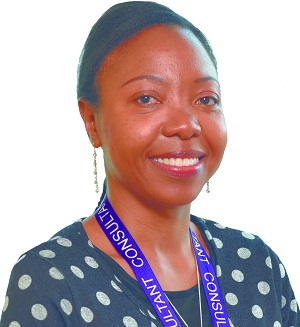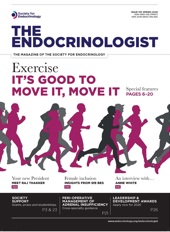Consultant Taffy Makaya and patient and keen sports participant Stefan Haest consider the issues faced by individuals with type 1 diabetes (T1DM) when taking part in physical activity.
WHY IS EXERCISE IMPORTANT IN TYPE 1 DIABETES?
The importance of exercise in maintaining health and well-being in people living with T1DM is well recognised.1–3 Extensive research has shown that there are many health benefits to physical activity, sport and exercise in children, young people and adults living with T1DM4–7 and these include:
- reduction in long term cardiovascular disease risk
- reduced insulin resistance
- improved blood pressure and endothelial function
- reduced risk of diabetic retinopathy
- reduced glycated haemoglobin (HbA1c)
- improved fitness and sense of well-being.
ACKNOWLEDGING THE CHALLENGES
However, managing T1DM and exercise is challenging. As a result of this, people with T1DM are generally less active than their peers who do not have diabetes8 and people living with T1DM have highlighted several obstacles which limit them from engaging in sport. In addition to the barriers reported by the general population, surveys of people with T1DM highlight a number of additional limitations:9–11
- fear of hypoglycaemia
- worrying about poor performance or under-performance when blood glucose readings are high
- lack of confidence in managing diabetes around sport/exercise
- difficulty in engaging in spontaneous exercise, due to a need for planning around diabetes.
People with T1DM involved in high level sports, competitive sport or endurance training may experience these concerns more severely or more frequently.12 These athletes train regularly, often for long sessions, and may take part in competitions and tournaments.12 Calculating nutritional and fluid requirements in very active athletes can also be challenging.13,14 It is important to consider the energy needs for the basal metabolic rate and also the increased demands for the training and exercise.15,16 This is particularly challenging for younger athletes who are still growing, or athletes trying to maintain a particular weight for ‘weight category sports’ or endurance sports like marathon running, or building muscle bulk/strength for power-based sports.
MOVING FORWARD
Over the past 20 years, there have been significant developments in theories regarding the impact of different types and intensities of exercise on blood glucose levels in this population. There are also newer technologies, such as continuous glucose monitoring systems, which (in addition to faster-acting insulins and insulin pumps) can provide real-time monitoring of interstitial glucose levels, and more precise adjustments to insulin doses before, during and after activity.17 Technology is also moving towards a ‘closed loop’ system for diabetes management. This has allowed the development of evidence-based exercise and physical activity consensus guidelines for individuals with type 1 diabetes, which are definitely worth a read.18,19,20
In addition, several centres now provide dedicated ‘diabetes sports clinics’ or ‘sports consultations’ to help support this population of athletes.21,22
IN SUMMARY
Despite the many challenges, particularly fear of hypoglycaemia, engaging in sport and exercise is important for health and well-being in people living with T1DM. There have been many advances in technology and specialist guidance, which now make it easier and safer for people with T1DM to feel more confident about taking part in sport, exercise and endurance challenges. It is important for anyone living with T1DM to have the support of healthcare professionals and peers in developing a sense of independence in managing diabetes and sport.
Taffy Makaya, Consultant in Paediatric Endocrinology and Diabetes, Oxford Children’s Hospital
Stefan Haest, Patient and Sportsman, Buckinghamshire, Oxford
REFERENCES
- JDFR 2020 Exercise www.jdrf.org.uk/information-support/living-with-type-1-diabetes/everyday-life/exercise.
- NICE 2016 Diabetes (Type 1 and Type 2) in Children and Young People: Diagnosis and Management. NICE Guideline 18 1.2.47–1.2.53.
- NICE 2016 Type 1 Diabetes in Adults: Diagnosis and Management. NICE Guideline 17 1.5.
- Tikkanen-Dolenc H et al. 2019 Acta Diabetologica doi:10.1007/s00592-01901454-y.
- Quirk H et al. 2014 Diabetic Medicine 31 1163–1173.
- Chimen M et al. 2012 Diabetologia 55 542–551.
- Zoppini G et al. 2003 Diabetes Nutrition & Metabolism 16 77–80.
- Wilkie L et al. 2017 Practical Diabetes 34 151–155.
- Scott SN et al. 2019 Experimental Physiology doi:10.1113/EP088097.
- Jabbour G et al. 2016 Canadian Journal of Diabetes 40 170–172.
- Pivovarov JA et al. 2015 Pediatric Diabetes 16 242–255.
- Jaggers JR et al. 2019 Diabetes Technology & Therapeutics 21 406–408.
- Griffiths G 2020 DiAthlete https://diathlete.org.
- Buoite Stella A et al. 2018 Annals of Nutrition & Metabolism 73 10–18.
- Iafusco D 2006 Acta Biomedica 77 41–46.
- Scott S et al. 2019 Nutrients 11 3017.
- Smart CE et al. 2014 Pediatric Diabetes 15 Suppl. 20 135–153.
- Yardley JE 2019 Open Access Journal of Sports Medicine 10 199–207.
- JDRF 2020 Performance in Exercise and Knowledge (PEAK) Program https://clinical.med-iq.com/endocrinology/family-medicine/internal-medicine/primary-care/sports-medicine/free-cme-series/the-jdrf-peak-performance-in-exercise-and-knowledge-program.html.
- Riddell M et al. 2017 Lancet Diabetes & Endocrinology 5 377–390.
- Makaya T et al. 2019 Diabetes Care for Children & Young People 8 20–26.
- Chetty T et al. 2019 Frontiers in Endocrinology doi:10.3389/fendo.2019.00326.
PATIENT PERSPECTIVE by Stefan Haest
I was diagnosed in 2003 at the age of 9, and have now had diabetes for 16 years. My mother noticed classic symptoms, such as frequent drinking and wetting the bed. I lost weight, and tackles in rugby began to hurt more. After a golf coaching session, I spent my pocket money on a Fanta and a Snickers bar and, later that day, I was diagnosed with a blood glucose level of over 40mmol/l, although ketones were very low.
Since diagnosis, I have been on twice daily mixed insulin, basal/bolus, insulin pump at age 16, and now pump with use of flash/continuous glucose monitoring. I have moved schools and geographical areas for university, and been diagnosed with coeliac disease and hypothyroidism.
I have always played sports, whether in school lessons, the playground or at club level. After my diagnosis, none of this changed. I was taught to do a finger-prick test before, during and after, and have carbs pre-sport and then if I were low. After diagnosis, I took 1 week off from local club rugby, but was back the following week. Exercise was normalised back into life immediately.
As has been widely documented, exercise has profound health impacts on key metrics for T1DM, such as HbA1c. However, it has impacts on mental and social aspects of life. Overcoming the challenges of managing diabetes is complex, and motivations or fears vary with each individual. Although a certain level of fear of hypoglycaemia is present when doing exercise, the larger fear for me, as a child, was a fear of missing out or a feeling that ‘you can’t’. I believe children naturally wish to play, engage and have fun with their peers. It has been important not only for my diabetes management, but also for my personal development, that I have had the ability and confidence to build up my own experience of various sports at various levels: skiing trips, being a badminton coach, club hockey, club and 1st XV rugby, cycling at university and club level, weight-lifting etc.
I have completed different challenges, mainly long distance cycling events (100 miles+) and others, such as a trail race up and down Snowdon. My next goal is to complete a 70.3 Ironman (a long-distance triathlon). As I have begun to increase the frequency and competitive nature of the sport I do, it has forced me to increase my knowledge and experience of nutrition, and search out knowledgeable healthcare professionals and ‘diabetes sports clinics’. Although challenging, I view this in a positive sense as, although I have to pay attention to this more due to my T1DM, it has also led me to have a strong knowledge of my body, fuelling and how to perform better.
I have volunteered with the Oxfordshire Paediatric Diabetes Service for 7 years to educate children with T1DM and their parents about managing a healthy life with regards to school, sport and lifestyle. Notably, this has entailed practical residential sports activity weekends and Q&A evenings. I do this to demonstrate that nothing is off-limits. In my experience, it is often beneficial to learn from peers with shared understanding and experience, regardless of how good healthcare professionals may be.
In my experience, confidence and independence with sport and T1DM are created by means of three key things:
- a) a good basic understanding of the physiological mechanisms
- b) practical trial and error experience, with the application of theoretical understanding into strategies
- c) preparedness.







